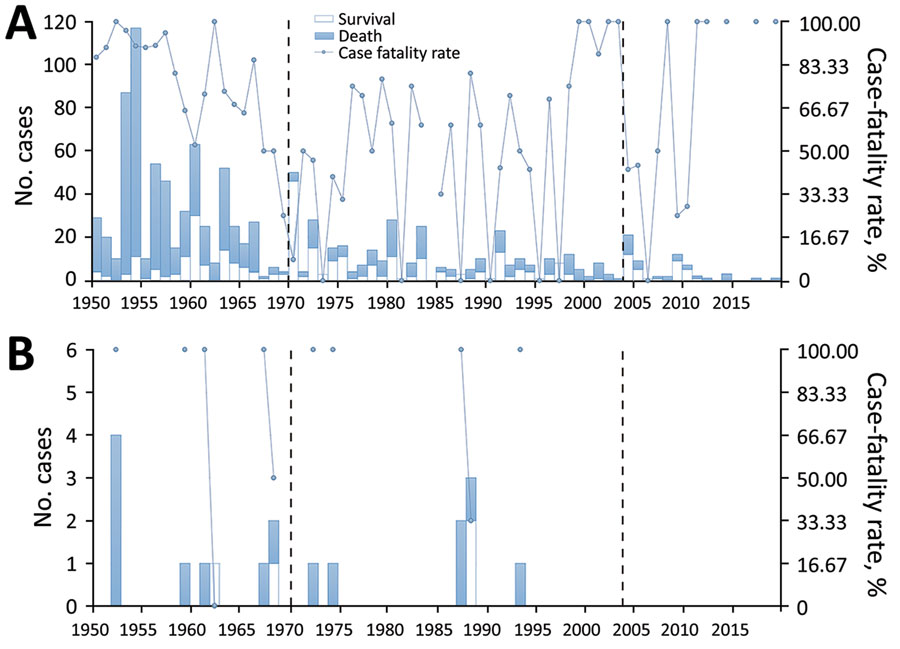Volume 27, Number 10—October 2021
Synopsis
Distribution and Characteristics of Human Plague Cases and Yersinia pestis Isolates from 4 Marmota Plague Foci, China, 1950–2019
Figure 6

Figure 6. Human plague cases detected in 4 Marmota plague foci, China. A) 1950–1969; B) 1970–2003; C) 2004–2019. Dot size indicates the number of years during which plague occurred in each timeframe; dot colors indicates number of periods (A, B, C) during which plague occurred for each location. Blue shading indicates the Marmota himalayana plague focus; purple shading indicates the Marmota baibacina–Spermophilus undulatus plague focus; red shading indicates the Marmota caudata plague focus; and yellow shading indicates the Marmota sibirica plague focus.
1These authors contributed equally to this article.
Page created: July 21, 2021
Page updated: October 13, 2021
Page reviewed: October 13, 2021
The conclusions, findings, and opinions expressed by authors contributing to this journal do not necessarily reflect the official position of the U.S. Department of Health and Human Services, the Public Health Service, the Centers for Disease Control and Prevention, or the authors' affiliated institutions. Use of trade names is for identification only and does not imply endorsement by any of the groups named above.